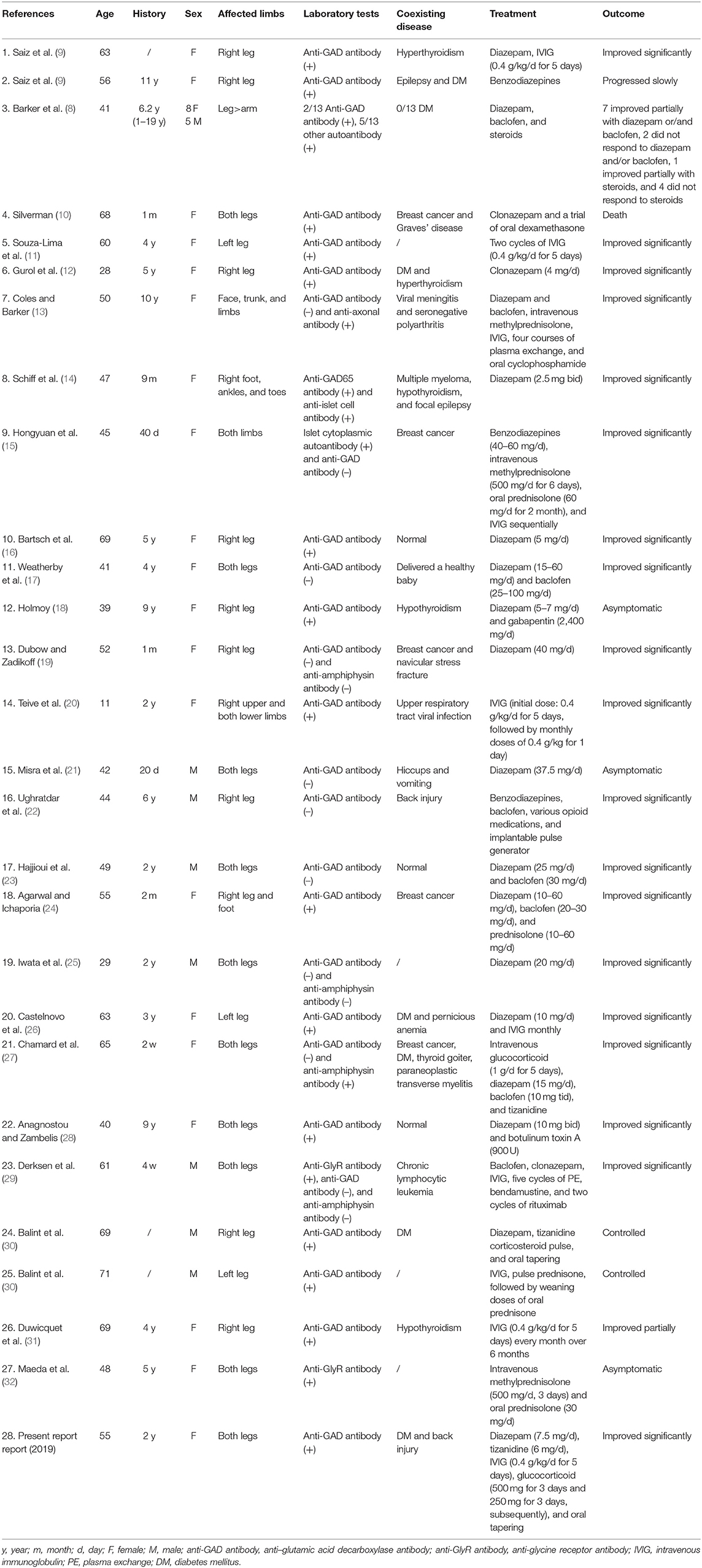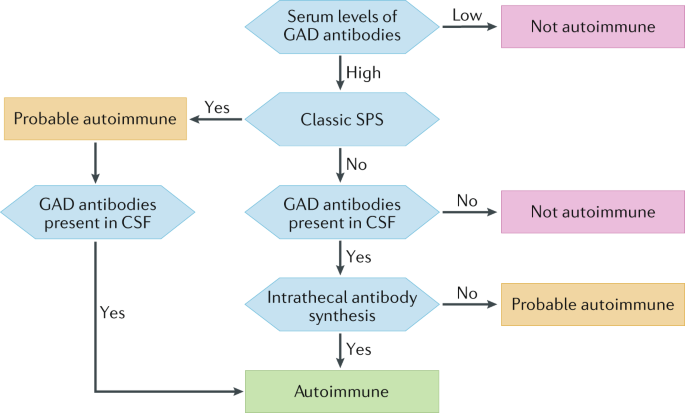Stiff Person Syndrome Symptoms | Symptoms of stiff person syndrome. The most common symptom of the stiff person syndrome is the initial axial muscle rigidity and pain. Treatment consists of immunomodulatory therapies and symptom management. For most diseases, symptoms will vary from person to person. Related online courses on physioplus.
Similar to other complications, stiff person syndrome targets and affects the central nervous system, such as the brain and the spinal cord. However, it's also regarded as an autoimmune disease. The antibodies involved are to a synaptic protein, amphiphysin. Diagnosis of stiff person syndrome is based on recognizing the symptoms and is supported by antibody testing, response to diazepam, and results of electromyography (emg) studies, which show. It is caused by increased muscle activity due to decreased.

What are the triggering factors of the spasms. Stiff person syndrome is a fluctuating motor disturbance characterized by persistent muscular stiffness due to coactivation of agonist and antagonist muscles with superimposed spasms. Stiff person syndrome is a rare neurological autoimmune disorder characterized by progressive muscle stiffness, mainly in the spine and legs. The antibodies involved are to a synaptic protein, amphiphysin. Symptoms typically begin in the forties, and the disease is. Treatment consists of immunomodulatory therapies and symptom management. It's believed to be a type of autoimmune disease, where your immune system attacks healthy parts of your body, in this case your brain and spinal cord. The stiffness primarily affects the truncal muscles and is superimposed by spasms, resulting in postural deformities. Symptoms may occur gradually, spreading from the back and legs to involve the arms and neck. Coined first by doctors frederick p. Symptoms may include forceful and prolonged. However, it's also regarded as an autoimmune disease. Stiff person syndrome is an extremely rare neurological condition which affects the nervous system of the body.
Psychiatric morbidity from this disease is common. It is majorly characterized by an autoimmune disease and fluctuating muscle rigidity. Stiff person syndrome (sps) is a progressive syndrome characterized by recurrent episodes of severe muscle stiffness, rigidity, and painful spasms in the trunk and this table lists symptoms that people with this disease may have. Related online courses on physioplus. The most common symptom of the stiff person syndrome is the initial axial muscle rigidity and pain.

It is caused by increased muscle activity due to decreased. Some patients remain stable for years; It is majorly characterized by an autoimmune disease and fluctuating muscle rigidity. The most common symptom of the stiff person syndrome is the initial axial muscle rigidity and pain. Symptoms of stiff person syndrome can take several months to a few years to develop. Symptoms and signs of stiff person syndrome. Diagnosis of stiff person syndrome is based on recognizing the symptoms and is supported by antibody testing, response to diazepam, and results of electromyography (emg) studies, which show. Symptoms are absent during sleep or anesthesia. An individual with stiff person syndrome will experience muscles spasms with severe pain stimulated normally by noise, touch, and most commonly emotional stress. Stiff person syndrome or sps is referred to as an autoimmune neurological disorder. Early, late and end stage.4 in the early stages, there are few reflexive integrity in individuals with stiff person syndrome can be assessed via deep tendon reflexes as well as resistance to passive stretch. Muscle spasms are precipitated by sudden movement, noise, or emotional upset. There may be a wide variety of symptoms and signs depending on the area affected.
Treatment consists of immunomodulatory therapies and symptom management. Stiff person syndrome is rather unique among neurologic diagnoses because of its lack of significant similarity to any other neurologic diseases. The most common symptom of the stiff person syndrome is the initial axial muscle rigidity and pain. For most diseases, symptoms will vary from person to person. Stiff person syndrome is a rare neurological autoimmune disorder characterized by progressive muscle stiffness, mainly in the spine and legs.
It is rather unique among neurologic diagnoses because of its lack of significant breast cancer: Stiff person syndrome is rather unique among neurologic diagnoses because of its lack of significant similarity to any other neurologic diseases. For most diseases, symptoms will vary from person to person. The unpredictability of symptoms and the linkage to stressful events only serve to exacerbate the situation. Symptoms of stiff person syndrome can take several months to a few years to develop. Psychiatric morbidity from this disease is common. Stiff person syndrome (sps) is a progressive syndrome characterized by recurrent episodes of severe muscle stiffness, rigidity, and painful spasms in the trunk and this table lists symptoms that people with this disease may have. In most people with stiff person syndrome, the trunk and abdomen muscles are the first to become stiff and enlarged. Related online courses on physioplus. Symptoms may occur gradually, spreading from the back and legs to involve the arms and neck. A variant of stiff person syndrome occurs rarely in patients with breast cancer. What are the triggering factors of the spasms. An individual with stiff person syndrome will experience muscles spasms with severe pain stimulated normally by noise, touch, and most commonly emotional stress.
Stiff person syndrome or sps is referred to as an autoimmune neurological disorder stiff person syndrom. The most common symptom of the stiff person syndrome is the initial axial muscle rigidity and pain.
Stiff Person Syndrome Symptoms: Treatment consists of immunomodulatory therapies and symptom management.
Referanse: Stiff Person Syndrome Symptoms